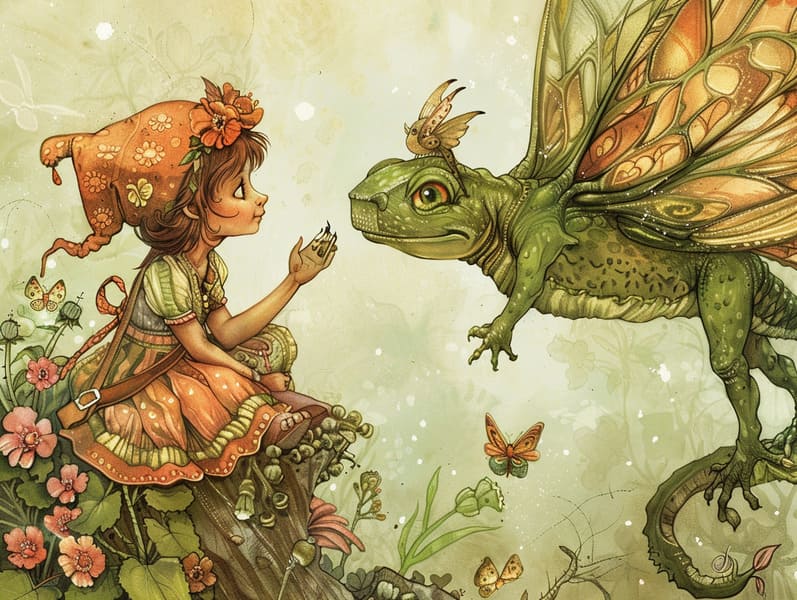The Journey of Mythical Fairy Tales and Its Endless Grandeur.
The Journey of Mythical Fairy Tales and Its Endless Grandeur.
Blog Article

Famous fairy tales have deep roots. These tales have been transmitted from one generation to the next millennia before they were ever documented. They were born from a variety of cultures, including American traditions. They were initially narrated among grown-ups, often carrying themes and messages related to the societal norms and beliefs of the time.
The Brothers Grimm, Jacob and Wilhelm Grimm, were among the first to assemble many of these beloved narratives. Their collection, "Grimm's Children's Stories," included classics like "The Little Glass Slipper," "Little Brother and Little Sister," and "Schneewittchen," which have since become hallmarks in the world of classic fairy tales. Similarly, Hans Andersen's fantastical fairy tales, such as "The Mermaid," and "The Story of the Ugly Duckling," have captured hearts worldwide, ensuring their place in the pantheon of famous fairy tales.
Even though they are old, these tales remain as applicable as ever, especially as bedtime stories for kids. These magical stories are now available in multiple formats, including vibrantly illustrated books, charming animations, and internet fairy tales.
Their ongoing significance can be traced to several whimsical characteristics:
Life Lessons: Old fairy tales often provide important moral lessons. Tales like "The Boy Who Cried Wolf" teach the benefit of sincerity, while "The Hare and the Tortoise" underline the benefits of persistence and humility. These narratives offer young ones clear distinctions between truth and falsehood, building their moral compass in a gentle yet profound way.
Compassion and Knowledge: Fairy tales frequently present characters facing trials and tribulations, stimulating young readers to relate with their struggles and applaud their triumphs. For instance, "Beauty and Her Beast" illustrates the necessity of valuing inner qualities to acknowledge the inner self of a person, building kindness and perception.
Cultural Perception: Many ancient fairy tales are deeply embedded in the cultural contexts from which they emerged. Exploring these stories can provide enlightening views into different ways of life, nurturing a sense of world understanding and discernment.
Inventiveness and Fantasy: The fantastical elements in old fairy tales—talking beasts—invigorate children’s creative dreams. These fairy tales lead readers to magical realms, generating innovative ideas and a sense of mystery that persists a lifetime.
Traditional fairy tales are not only fantastical but also educational. They serve as spellbinding tools in fostering various intellectual and emotional capacities in little ones. When classic fairy tales are voiced, they improve language proficiency by showing new language items and complex sentence structures. This practice also nurtures hearing perception and attentiveness, as young readers remain attentive, eager to see what happens next.
Furthermore, deliberating the themes and characters of classic fairy tales can advance cognitive skills and analytical skills. Children are taught to detect patterns, guess what will happen, and comprehend cause and effect. These analyses also contribute to children reveal their thoughts and feelings, enhancing their emotional intelligence.
In today’s technological era, the presence of internet fairy tales has made these tales more within reach than ever. Online resources and applications give huge assortments of popular fairy tales that can be explored or listened to anytime, anywhere. Fairy tales read out loud are particularly common, presenting an entertaining method for young readers to take part in these charming tales. Read-aloud books and read-out-loud stories guide characters and settings to life, often paired with captivating melodies and instrumentals that boost the narrative adventure.
The timeless charm of old fairy tales lies in their ability to change to current times while sustaining their central values. Contemporary reinterpretations of these fairy tales often introduce more multicultural protagonists and modern settings, making them understandable to today’s audience. However, the fundamental themes of guts, humanity, and fair play remain unchanged, continuing to affect children of all ages.
Timeless fairy tales also offer a sense of contentment and knowability. They share a orderly narrative with a clear beginning, middle, and end, often finishing with the termination of conflicts and the triumph of morality over wickedness. This foreseeability can be heartening for children, giving a sense click here of sturdiness in an ever-changing world.
Traditional fairy tales continue to spellbind and coach new generations, maintaining their elegance and importance in modern society. As kids' bedtime tales, they furnish a perfect blend of charm and enlightenment, fostering moral values, empathy, and creativity. The proliferation of web-based fairy tales and the sought after status of fairy tales told out loud confirm that these traditional fairy tales remain within reach to new generations.
By guarding and imparting these stories, we continue to commemorate the rich tapestry of narrative artistry and cultural heritage. Whether you are enjoying a vibrantly illustrated book, browsing a web-based library, or playing an spoken story, the splendor of ancient fairy tales is always within reach. These fairy tales reveal of the ageless effect of storytelling and its ability to bind us across eras and regions.
If you are exploring a colorful picture book, browsing a digital collection, or playing an spoken story, the grandeur of popular fairy tales is always within reach.
These fairy tales teach us of the ageless spell of tales and its ability to hold us together across generations and cultures, establishing a link that charms and informs alike.